Bouncing Characters
Before the bouncing character started, Chris and Ko took me through a small ball movement exercise. In this part, I learned that the rhythm of the ball is different from what the audience perceives.
In the class, Chris said that the 12 rules of animation are the basics of good animation. These 12 requirements have really helped me with animating my characters.
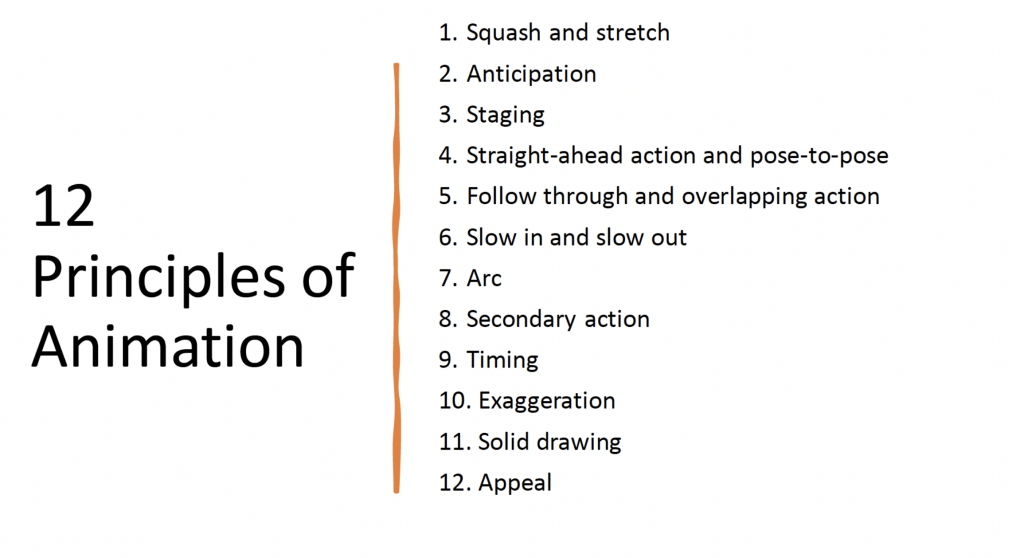
I created a character who is a fat guy. What I associate with the sphere is that it is very similar to the fat guy. I have seen Japanese sumo wrestlers on TV, and they are very fat and flexible, which fits my fantasy of a bouncing character, so I researched about Japanese sumo wrestlers. Below are the character’s mind map, moodboard, silhouette, and character turns.




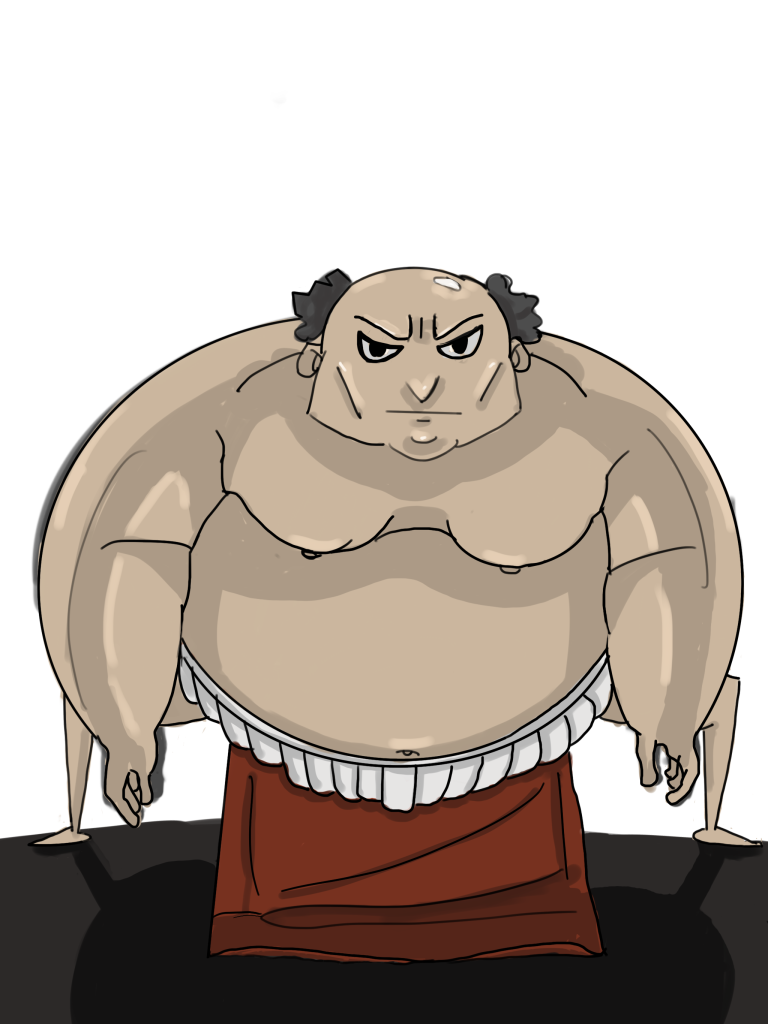
Before I start, I do two practice 2D and 3D bouncing character animations.
3D Workshop Practice
First Draft
Give me some suggestion
1、The character’s hand movement should be based on the body movement
2、The character’s chest has to move
3、The character’s head to start up
4、The character has to jump up all the time and can’t jump back
5、 the character’s hand grip to the knee has to be in line with the structure of the human being
6、The animation of the 17 frames of the movement of the hand has to be changed, and the chest has to be changed
7、 the character’s legs have to be the right size.
In this part, I think the most difficult part is the hand movement because the hand shape is complex. I need to confirm that the character’s hands have the correct shape.
Final Video
Character Push
Reference video
Keyframe
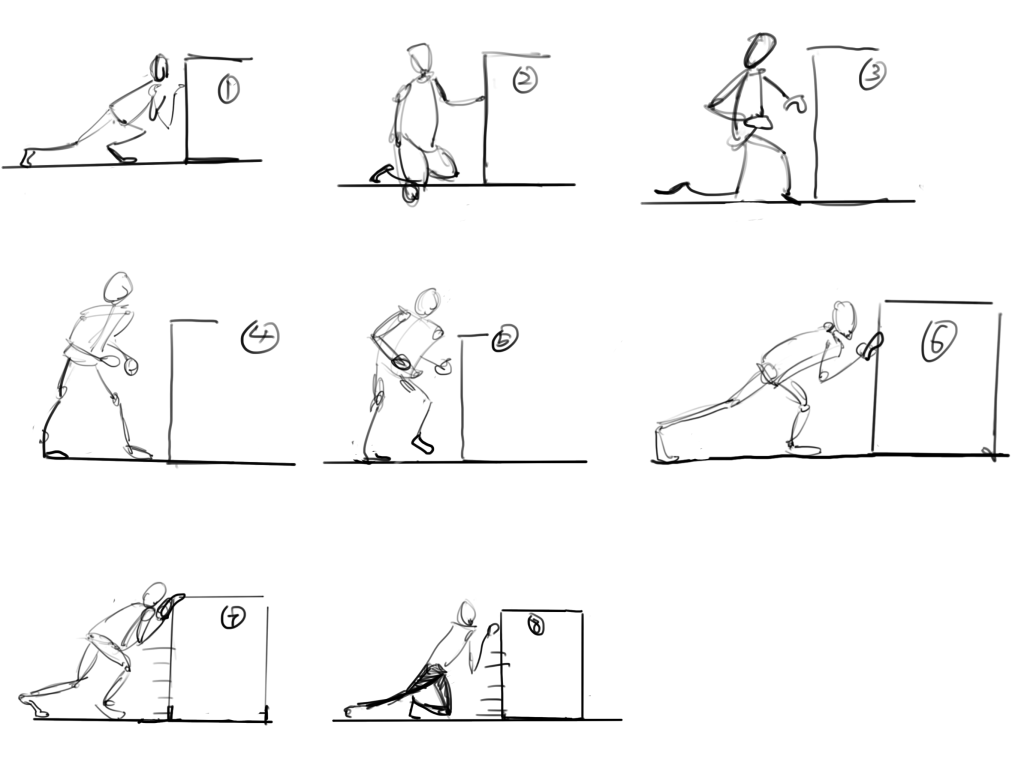
ko suggestions
1. The character pushes too fast
2. The representative with the force around the line cancelled and changed to shaking frames.
3. Add a frame when the character pushes the hand out; put the head down.
4. The movement of the time to give some time to pause is not too fast.
Character Design
The tutor asked us a few questions about character design, so my character inspiration was developed based on those questions.
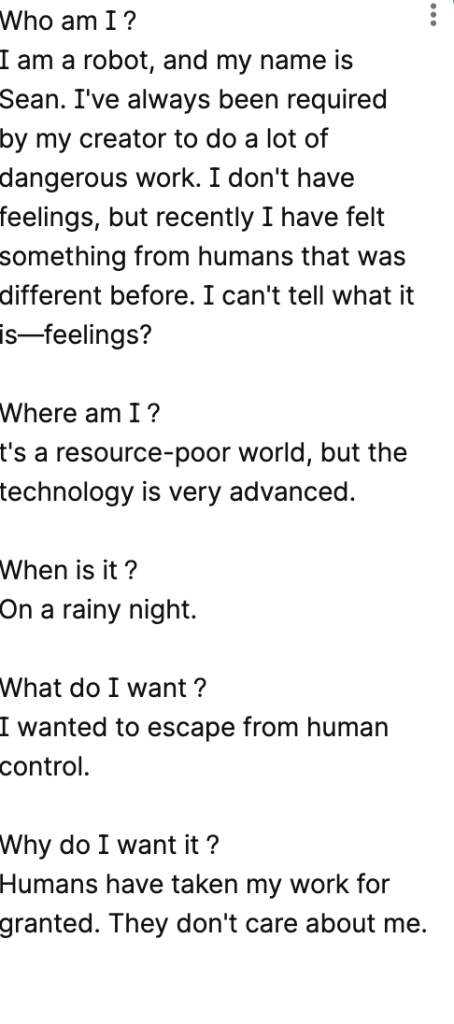
My character is a robot. For the character aspect of the design, I wanted to display complex structure to the audience, so in terms of research, I researched robotic arms and robot body structure. In the colour aspect, I referenced the colours of work clothes as the character is a service type.
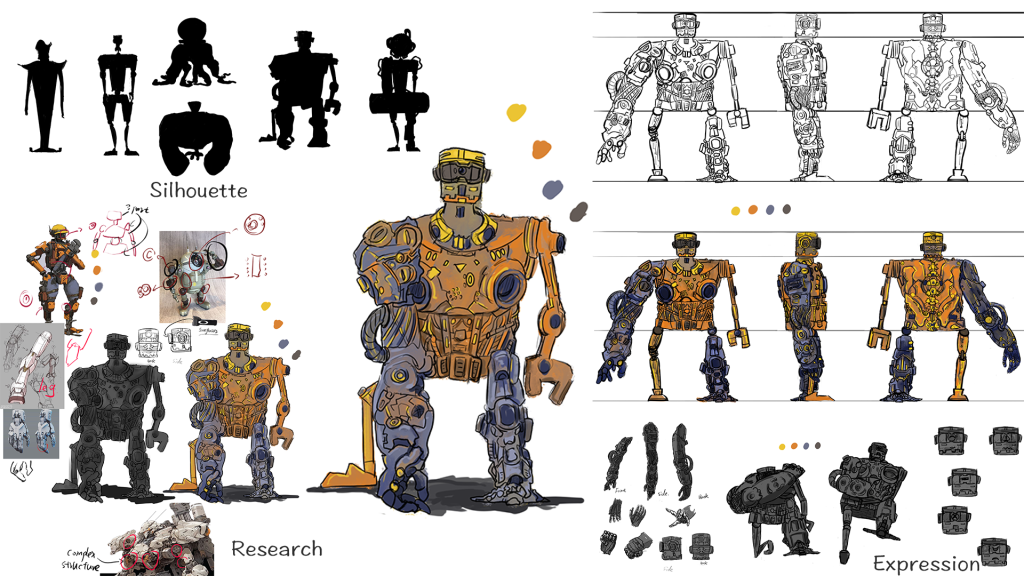
The character needs to be shown to the audience, so in terms of pose, I tried to defend the stance and look up perspective. In expression, I drew happy, angry, and scared and stopped thinking.
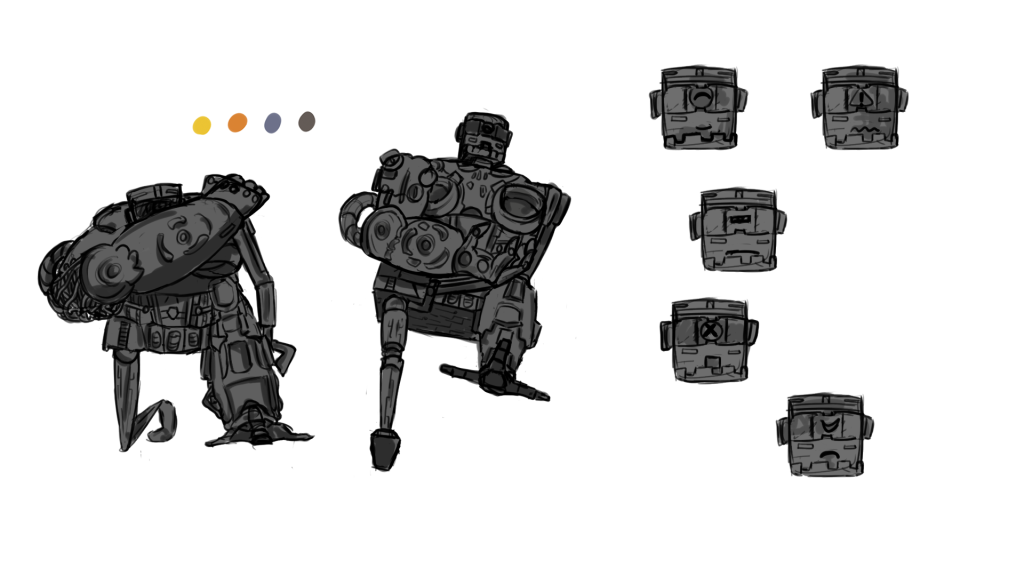
Mood change walk
The characters I wanted to create were drunk people. Firstly, the first part of him is very happy because he doesn’t realise that there’s no more alcohol in the bottle. The second part of the character is very depressed when he realises that the bottle is empty.
Reference
Draft
Final video
Quadruped walk
Before starting this project, I tried to do an exercise similar to the tail following a sphere.
When I started this project, the animal’s tail movement was completely different from the exercise above, and it was very difficult for me. I was always confused about the dog’s tail movement because the draft tail looked very strange because it didn’t follow the movement of the dog’s body.
Draft
I changed the size of the tail but didn’t have control over the size of the tail, making it keep increasing in size. The tail was shaking too fast, so I changed the speed and size of the tail shaking.
The tutor‘s suggestion is that the dog’s tail has to be balanced, and the head has to follow the body movement.
Final video
Silent Film: Body and Facial Acting
Draft
Lip Synch
Based on our group’s discussion, we decided the theme was which superpower I wanted the most. The superpower I would like to have is precognition.
Reason:
I don’t want to work; if I had this superpower, I would be very comfortable in bed. Use it to predict today’s lottery results. Immediately after that, I would go and buy a lottery ticket so that I could get a lot of money.
Hand movement reference
The most difficult part of this project for me was the movement of the hand. The hand was so hard to draw because of its complex shape. I need to think about the shape when it moves. So I took photos and videos to do my reference.
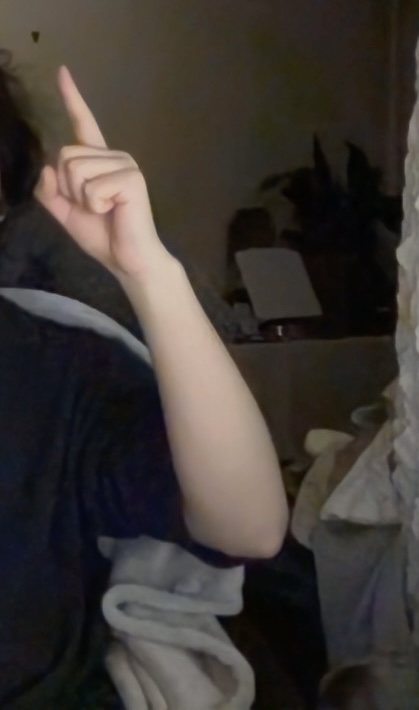

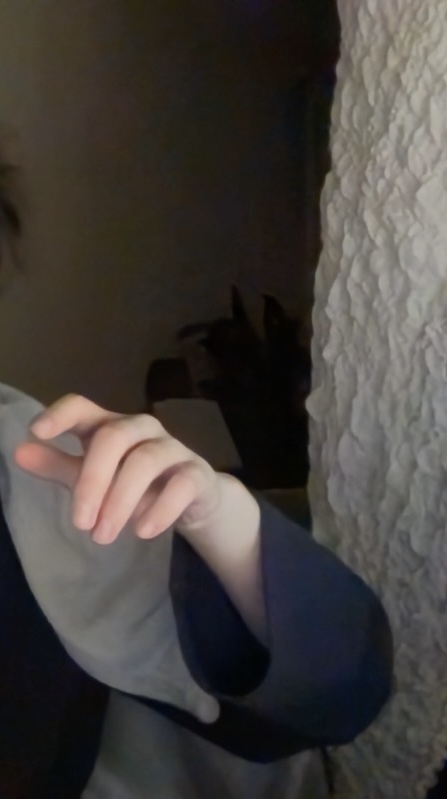
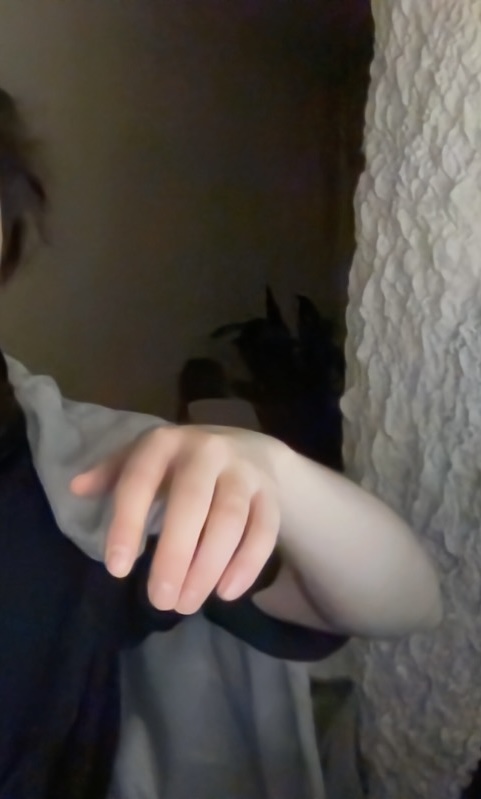
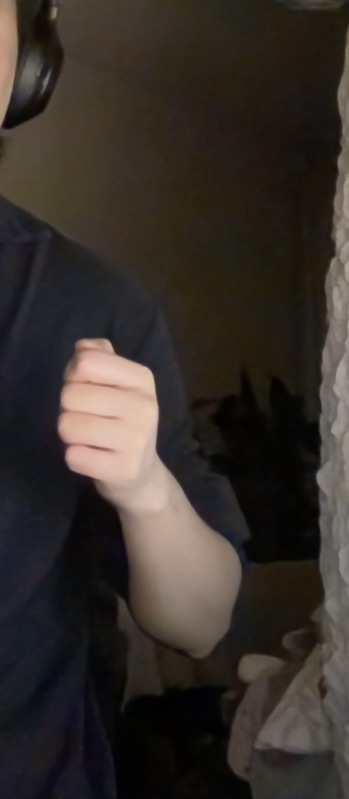

Video reference
Reflection
Through these 7 projects, I have tried to use the 12 principles of animation in each project. I learned that in the process of animation, if I want to save time and control the time of the animation character reasonably well, I have to finish the keyframe first. After that, I have to make up the intermediate animation frames. Before I took this course, I always thought that I could finish the animation by completing the keyframe and then fill in the intermediate frames, but that is not true.Completing all the intermediate animation frames without rhythmic changes will only increase the workload and waste time. If I want to change the rhythm, I can do it by squashing and stretching, slowing in and slowing out. I learned this from bouncing ball and it has improved my productivity and quality. Another important point is to always have a reference. Before that, I thought a reference was not necessary. Until the push project, KO said everyone has to record a video of push and pull. Having a reference really helped me to speed up my work to a certain extent. After that, I’ve been searching for one or two references for every project I’ve worked on. During the walk-change production, I started to consciously apply the requirement of “how to make the action interesting” to my projects. Secondary action, timing, follow-through, and overlapping action are the things I learned in the change walk. My character is a very drunk person, so timing, slow in/out, and secondary action. are very important because drunk people are slower than normal people and have different movement path. So the different states of the character can be displayed to the audience by changing the speed of timing and secondary action.In the previous projects, the keyframes were drawn together, but in the lip synch project, the mouth and hand movements are separate. This project is different from the previous ones; the hand movement has its own keyframe, and the mouth has its own keyframe. These two parts are separate when drawing keyframes. During this project, I learned that body parts have their own rhythm of movement.
Overall, I am very excited about this unit 1 learning journey because I have progressed from the basics of animation to now being able to make simple animations, which is a very successful result for me. Based on the animation, I have learned 12 animation discipline rules through 7 project exercises. The difficulties I encountered during the project were the movement of the dog’s tail and the movement of the character’s hand on the bouncing ball. These challenges were solved through the tutor’s feedback.